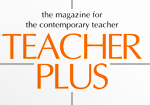Yasmin Jayathirtha
Children always learn better by doing. So, in order to understand how scientists came up with certain explanations for their theories, they need to work on some experiments which will help them visualize and also come up with deductions.
Category: Let’s Experiment!
Learning the process of bonding
Yasmin Jayathirtha
Here are some experiments that students can do to illustrate atomic structure and bonding and also put them into a context.
From sweets and seeds to atoms and reactions
Yasmin Jayathirtha
Chemical reactions are an important part of the study of chemistry. What should you observe during a chemical reaction? What are the different things that you should note? How do you derive chemical equations? Find answers to these questions in this time’s Let’s Experiment.
Linking data to atoms
Yasmin Jayathirtha
As we saw in the last article, the periodic table gives students an insight into a qualitative way of classifying types of elements. The table also leads naturally to students getting curious about the numbers associated with the elements.
It’s elementary, dear chemist!
Yasmin Jayathirtha
How can the periodic table be used as a link between the world of atoms and the world of reactions? The author suggests that by studying the development of the periodic table, students see that scientists have made the attempt to group elements according to their properties. The author has listed some activities that will help students get familiar with the structure of the periodic table.
Visible reactions
Yasmin Jayathirtha
Chemistry is all about reactions. The reactions are first seen at the test tube level and then students try and make sense of what is happening at the larger level— where the reactions are actually happening—in the atoms, ions and molecules. Teachers need to really pass on this skill to students, to help them see a reaction, write down the observation and then visualise it at the level of the particles
Making it visible
Yasmin Jayathirtha
While talking about the atomic structure, most teachers find it difficult to explain to students about how an atom looks. Questions like what led to the idea of atoms, what could be the size of the atoms do come up because students are being taught about things that they cannot see. This article illustrates a few concepts that can be understood.
The art of separation
Yasmin Jayathirtha
We know that a lot of things around us are present in the form of mixtures. Mixtures of two liquids, a liquid and a solid, two solids, etc. What lessons can we learn by separating a mixture? What are the different ways we can separate different mixtures?
Chemistry through activities
Yasmin Jayathirtha
The first lesson in the chemistry class is to define what chemistry is! Students when asked what chemistry is, say; ‘reactions’ ‘acids’,’stuff in the lab’ and for some the ultimate bad word ‘chemicals’. We need to point out that we are all made up of ‘chemicals’ and the subject is the study of changes that substances undergo – as when you eat a banana and it becomes you.
From seeing to thinking
Yasmin Jayathirtha
During the years I was writing ‘Let’s Experiment’ I was experimenting in my own classrooms, trying to find the best way to integrate experiments into the teaching of the subject. It is very clear to me that no meaningful learning of chemistry can happen without work in the laboratory.
